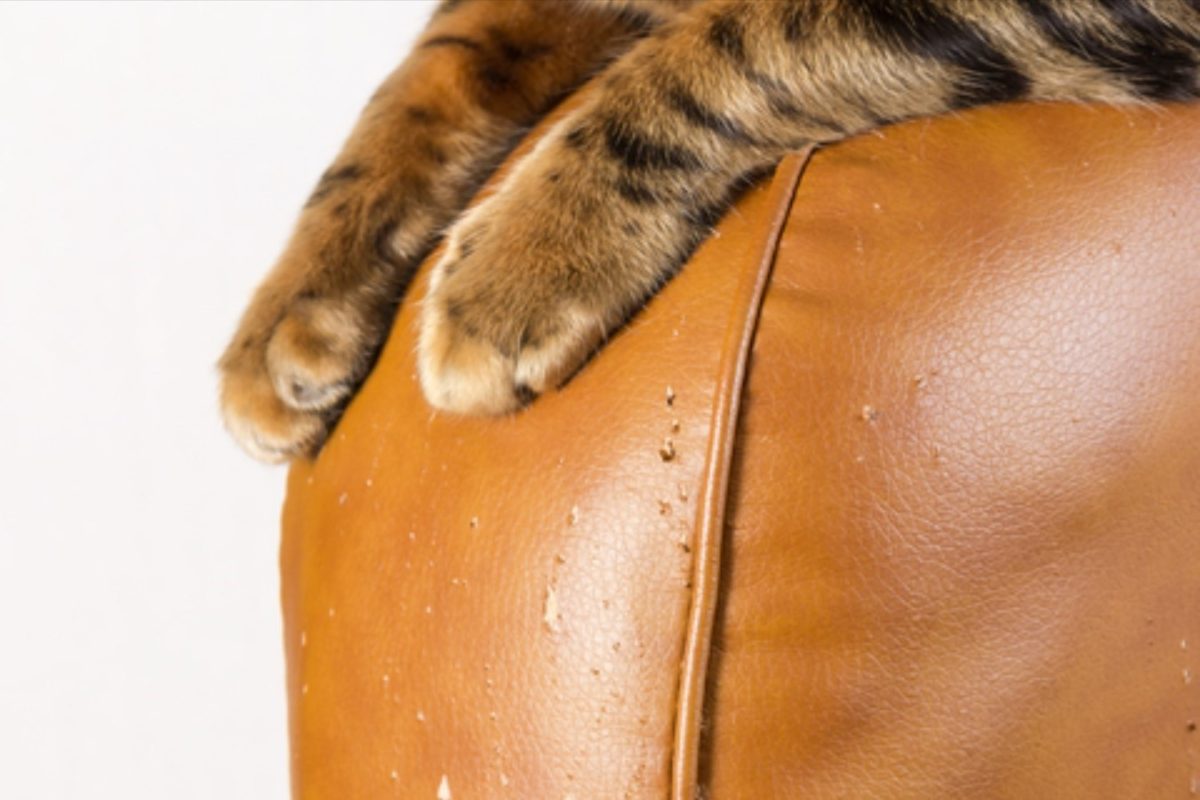Behavior, Everything, Cats, Pet Care
When Your Cat Scratches the Furniture
Your prized furniture has become a collection of cat scratching posts. While Fluffy can’t stop herself from scratching, you can’t accept the destruction of your furniture. Can scratch-free furniture and cats co-exist?
To prevent your cat from scratching furniture, you need to convince her that scratching furniture isn’t pleasurable, and that the alternatives you provide are.
Why cats scratch furniture
Your furniture is a decorative and useful part of your home. Cats agree with the useful part. Feline instinct compels them to scratch to remove the outer layer of their claws, and cats find fabric, leather, and wood to be delightful scratching surfaces.
Cats also scratch to mark their territory. Scratch marks signal cats’ territory visually, and secretions from the cats’ feet leave the cats’ scent behind for other cats.
In addition, scratching is part of cats’ stretching and toning routine. Your sofa may be just the thing to anchor cats’ claws while they’re stretching and toning their muscles.
Scratching may also provide stress relief for cats. Many people release their stress by playing sports or doing other physical activities; cats appear to experience a similar sense of release when they take on a scratching post with their claws.
During their exploratory stage, kittens learn by using their claws to touch everything. Like human babies, kittens outgrow their examine-everything phase. They can learn that a scratching post or other alternative you provide satisfies their scratching urges as well as or better than furniture.
Repellents to train your cat not to scratch furniture
Any or a combination of these techniques help make your furniture unappealing for a cat to scratch.
- Double-sided sticky tape, Saran Wrap, or aluminum foil on surfaces that your cat likes to scratch (temporarily until your cat learns to scratch elsewhere)
- Citrus furniture polish — most cats don’t like the odor
- Boundary cat repellent sprayed on furniture (the odor is normal to humans but offensive to cats)
- CatScram cat repellent to keep cats out of specific rooms and areas
Your cat will also scratch less if you keep her claws trimmed.
Training methods that require a person to be present are less effective. Your cat will learn that she may get squirted with water if she scratches the furniture while you’re in the room, but that nothing stops her when people aren’t there. Objects that make noise when cats scratch furniture are more effective, but the message to cats is confusing when cats are responding to a behavioral instinct.
Scratching posts for your cat
Your cat has to scratch, so give her a scratching post as an alternative to furniture. Better yet, provide her with more than one scratching post, and experiment with different locations. Try horizontal and vertical scratching posts as well as different textures, such as corrugated cardboard, sisal, or wood. A piece of cardboard, driftwood, or firewood with bark on it may work just fine. Carpet, while popular with cat owners, is not rough enough for most cats unless the underside is facing up.
If you have more than one cat, provide more than one scratching post, and put them in different areas so that each cat can stake her own territory with her claws.
Encourage your cat to use a scratching post by praising her and giving her extra attention when she uses it and by stroking her when she’s next to it. Show her how to use it by scratching the post yourself. Drag a toy over the scratching post, and when she tries to catch the toy, she’ll feel what it’s like to dig her claws into the scratching surface that you provided for her. Placing her next to it when she wakes up can help, as cats often want to scratch when they wake up. Catnip on the scratching post can also encourage a cat to use it.
Don’t hold your cat’s feet to the scratching post to teach her to use it. Doing this may make your cat associate the scratching post with restraint.
If you have a kitten, get her accustomed to scratching posts at an early age.
What if your cat doesn’t like a scratching post? Common reasons:
- The scratching post surface isn’t rough enough, which means that your cat will look for rougher surfaces — your furniture, for example.
- The scratching post isn’t stable enough. If it wobbles when your cat tries to use it, she’ll be tempted to exercise her claws on your sturdy sofa instead.
- The scratching post isn’t tall enough for the cat to stretch as she scratches. It should be at least two to three feet long.
Is declawing an option?
If you don’t mind maiming your cat permanently to save your furniture, having your cat declawed is effective, but it’s far from humane. We explore declawing in the article entitled, To Declaw or Not Declaw Your Cat


